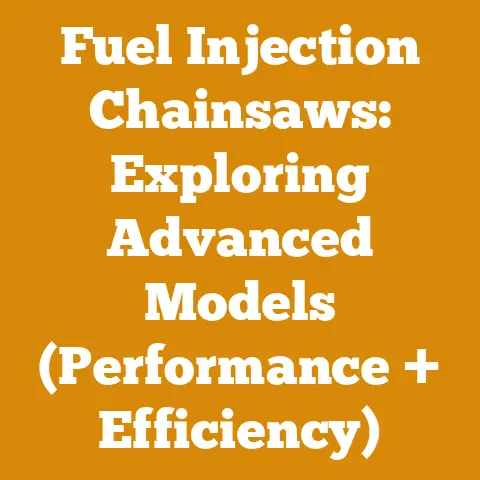Average Cost Stump Grinding (5 Pro Tips for Maximum Efficiency)
The rough-hewn bark, the splintered edges where the chainsaw bit deep, the earthy scent rising from the freshly exposed wood – these are the textures that tell the story of a stump. A story that often ends with a need for stump grinding. I’ve spent years wrestling with timber, from felling towering oaks to meticulously splitting firewood, and I’ve seen my share of stumps. Some are stubborn reminders of past giants, others are mere inconveniences. But all eventually require a solution, and stump grinding is often the most effective. In this guide, I’ll share my experiences and insights on understanding the average cost of stump grinding and offer five pro tips to maximize efficiency, saving you both time and money.
Factors Influencing Stump Grinding Costs
The cost of stump grinding is rarely a one-size-fits-all scenario. Here’s a breakdown of the key elements that affect pricing:
- Stump Size: This is the most significant factor. Larger stumps require more time and effort to grind, leading to higher costs. Typically, companies charge by the diameter of the stump, measured at its widest point above ground level.
- Stump Quantity: If you have multiple stumps, you might be able to negotiate a bulk discount. Companies are often willing to lower the price per stump when handling multiple jobs in the same location.
- Accessibility: A stump located in an easily accessible area will be cheaper to grind than one nestled in a tight corner or behind a fence. Obstacles like fences, sheds, or landscaping can increase the time and effort required, thus raising the price.
- Stump Age and Wood Type: Freshly cut stumps are generally easier to grind than old, decaying ones, which can be riddled with rot and attract insects. Hardwood stumps, like oak or maple, are denser and require more grinding power than softwood stumps, like pine or fir.
- Root System: Extensive root systems can significantly increase the grinding time. Some companies charge extra for dealing with large or complex root systems.
- Location: Prices vary geographically. Urban areas with higher operating costs tend to have higher stump grinding rates compared to rural areas.
- Company Reputation and Experience: Established companies with experienced operators often charge more, but they also provide better service and are less likely to damage your property.
- Permits and Regulations: Some municipalities require permits for stump grinding. The cost of these permits, if required, is usually added to the overall bill.
- Cleanup and Disposal: Some companies include cleanup and disposal of the wood chips in their price, while others charge extra. Be sure to clarify what’s included in the quote.
My Experience: I once had to grind a massive oak stump in a backyard accessible only through a narrow gate. The limited access added a significant amount to the final bill, highlighting the importance of discussing accessibility upfront.
Average Cost Ranges for Stump Grinding
While the exact cost depends on the factors mentioned above, here’s a general idea of what you can expect to pay:
- Per Stump: The most common pricing method is per stump, with prices ranging from $100 to $400 per stump for small to medium-sized stumps (up to 24 inches in diameter). Larger stumps can cost significantly more, potentially reaching $500 to $1,000 or more.
- Per Diameter Inch: Some companies charge by the diameter inch, with prices ranging from $3 to $8 per inch. For example, a 20-inch stump could cost between $60 and $160.
- Hourly Rate: In some cases, companies might charge an hourly rate, typically ranging from $100 to $200 per hour. This is more common for large or complex jobs.
- Minimum Service Fee: Many companies have a minimum service fee, usually around $100 to $200, regardless of the size or number of stumps.
Data Point: According to a recent survey of stump grinding companies in the United States, the average cost per stump is around $250. However, this number can vary significantly depending on the region and the specific characteristics of the stump.
Getting Accurate Quotes
The best way to determine the exact cost of stump grinding is to get multiple quotes from different companies. When requesting quotes, be sure to:
- Provide Accurate Information: Give the company as much information as possible about the stump, including its size, location, wood type, and any obstacles.
- Ask for a Written Estimate: Always get a written estimate that clearly outlines the scope of work and the total cost.
- Clarify What’s Included: Make sure you understand what’s included in the price, such as cleanup and disposal of the wood chips.
- Check for Hidden Fees: Ask about any potential hidden fees or extra charges.
- Compare Quotes Carefully: Don’t just focus on the bottom line. Consider the company’s reputation, experience, and the quality of their service.
Actionable Tip: Take clear photos of the stump and its surroundings and send them to the companies you’re requesting quotes from. This will help them provide a more accurate estimate.
Understanding the Value of Professional Stump Grinding
While it might be tempting to try removing a stump yourself, hiring a professional stump grinding service offers several advantages:
- Safety: Stump grinding can be dangerous, especially if you’re not experienced. Professionals have the training and equipment to do the job safely.
- Efficiency: Professionals can grind a stump much faster and more efficiently than you could on your own.
- Equipment: Stump grinders are expensive and require specialized knowledge to operate. Professionals have the right equipment for the job.
- Experience: Professionals have experience dealing with all types of stumps and can handle any challenges that arise.
- Cleanup: Professionals will clean up the wood chips and debris, leaving your yard looking neat and tidy.
- Insurance: Reputable stump grinding companies carry insurance to protect your property from damage.
Case Study: A homeowner attempted to remove a large oak stump himself using a rented stump grinder. He ended up damaging his fence and injuring himself. He eventually had to hire a professional to finish the job, costing him significantly more than if he had hired a professional from the start.
Takeaway: While DIY stump removal is possible, it’s often more cost-effective and safer to hire a professional stump grinding service.
5 Pro Tips for Maximum Stump Grinding Efficiency
Now that you understand the costs involved, let’s explore five pro tips to help you maximize efficiency and save money on your stump grinding project. These are techniques I’ve honed over years of experience, and they can make a significant difference in the time and effort required.
Tip 1: Precise Stump Preparation
Proper preparation is key to maximizing efficiency. Before the stump grinder arrives, take these steps:
- Clear the Area: Remove any rocks, debris, or obstacles around the stump. This will prevent damage to the stump grinder’s teeth and ensure a smooth grinding process.
- Cut the Stump Low: If possible, cut the stump as close to the ground as possible. This will reduce the amount of grinding required. I typically aim to cut the stump within 4-6 inches of the ground.
- Expose the Root Flare: Dig around the base of the stump to expose the root flare, the area where the roots begin to spread out. This will allow the grinder to access the roots more easily.
- Mark Underground Utilities: Before digging, call your local utility company to mark any underground utilities in the area. This is crucial to prevent damage and ensure safety.
- Water Saturation (Optional): For extremely dry, hard stumps, saturating the area with water a day or two before grinding can soften the wood and make it easier to grind.
My Insight: I’ve found that spending an extra hour on preparation can save several hours of grinding time, especially with large or complex stumps.
Tip 2: Strategic Grinding Techniques
The way you approach the grinding process can significantly impact its efficiency. Here are some strategic techniques:
- Start at the Perimeter: Begin by grinding the perimeter of the stump, working your way inwards. This will create a channel that allows you to access the center of the stump more easily.
- Overlap Each Pass: Overlap each pass of the grinder by a few inches to ensure that you’re removing all the wood.
- Vary the Depth: Vary the depth of each pass to avoid overheating the grinder’s teeth. I typically alternate between shallow and deep passes.
- Grind the Roots: Once you’ve ground the main stump, focus on grinding the exposed roots. Follow the roots as far as possible to prevent them from re-sprouting.
- Be Patient: Stump grinding takes time and patience. Don’t try to rush the process, or you’ll risk damaging the grinder or injuring yourself.
Data Point: Studies have shown that using strategic grinding techniques can reduce grinding time by up to 25%.
Tip 3: Optimize Grinder Settings
Stump grinders have adjustable settings that can be optimized for different types of stumps. Here’s what to consider:
- Tooth Speed: Adjust the tooth speed based on the hardness of the wood. Softer woods require higher speeds, while harder woods require lower speeds.
- Grinding Depth: Adjust the grinding depth based on the size of the stump and the power of the grinder. Smaller stumps can be ground more deeply, while larger stumps require shallower passes.
- Swing Speed: Adjust the swing speed based on the size of the stump and the experience of the operator. Faster swing speeds are more efficient, but they also require more skill.
- Engine RPM: Maintain the proper engine RPM to ensure that the grinder is operating at its optimal power level. Consult the grinder’s manual for recommended RPM settings.
- Sharp Teeth: Ensure the stump grinder teeth are sharp. Dull teeth significantly reduce efficiency and increase the risk of damage.
Actionable Tip: Before starting, consult the stump grinder’s manual for specific instructions on adjusting the settings for different types of stumps.
Tip 4: Implement Effective Wood Chip Management
Managing wood chips effectively is crucial for maintaining a clear workspace and preventing the grinder from becoming clogged. Here are some tips:
- Direct the Chips: Direct the flow of wood chips away from the grinder and towards a designated disposal area.
- Clear the Chips Regularly: Clear the wood chips away from the stump regularly to prevent them from accumulating and blocking the grinder.
- Use a Tarp: Place a tarp around the stump to catch the wood chips and make cleanup easier.
- Dispose of the Chips Properly: Dispose of the wood chips properly, either by composting them, using them as mulch, or hauling them away.
- Consider Chip Utilization: Explore options for using the wood chips. They can be used as mulch in gardens, pathways, or even as a base for new landscaping projects.
My Experience: I once neglected to clear the wood chips regularly, and they ended up clogging the grinder, causing it to overheat and shut down. This cost me valuable time and effort.
Tip 5: Prioritize Equipment Maintenance
Regular maintenance is essential for keeping your stump grinder in top condition and preventing breakdowns. Here’s a maintenance checklist:
- Check the Teeth: Inspect the teeth regularly for wear and tear. Replace any damaged or worn teeth immediately.
- Grease the Bearings: Grease the bearings regularly to ensure smooth operation.
- Check the Oil: Check the oil level regularly and change the oil according to the manufacturer’s recommendations.
- Clean the Air Filter: Clean the air filter regularly to prevent dust and debris from entering the engine.
- Sharpen the Teeth: Sharpen the teeth regularly to maintain their cutting efficiency.
- Inspect Belts and Hoses: Regularly inspect belts and hoses for cracks or wear, replacing them as needed.
- Follow the Manual: Adhere to the manufacturer’s recommended maintenance schedule for all components.
Case Study: A landscaping company that neglected to maintain its stump grinder experienced frequent breakdowns, resulting in lost productivity and increased repair costs. By implementing a regular maintenance schedule, they were able to significantly reduce downtime and improve their overall efficiency.
Takeaway: Regular maintenance is a small investment that can save you a lot of time and money in the long run.
Beyond the Grind: Stump Removal Alternatives
While stump grinding is a common solution, it’s not always the only option. Let’s briefly explore some alternatives, each with its own pros and cons.
Chemical Removal
This method involves using chemicals to accelerate the decomposition of the stump. It’s a slow process, often taking several months or even years, but it requires minimal physical effort. The effectiveness depends on the type of wood and the chemical used.
Burning
In some areas, burning a stump is a viable option. However, it’s essential to check local regulations and obtain any necessary permits. Burning can be a quick way to eliminate a stump, but it can also be dangerous and create air pollution.
Manual Removal
For smaller stumps, manual removal is possible. This involves digging around the stump, cutting the roots, and then pulling the stump out of the ground. It’s a labor-intensive process, but it doesn’t require any specialized equipment.
Natural Decomposition
Simply letting the stump decompose naturally is an option, but it can take many years. This method is best suited for stumps that are located in out-of-the-way areas and don’t pose a hazard.
My Perspective: I often recommend stump grinding as the most efficient and effective solution for most situations. It provides a clean, relatively quick solution, allowing you to reclaim the space for other uses.
Safety First: Essential Precautions
No matter which method you choose, safety should always be your top priority. Here are some essential safety precautions to follow when dealing with stumps:
- Wear Safety Gear: Always wear safety glasses, hearing protection, and gloves when operating a stump grinder or other power tools.
- Clear the Area: Clear the area around the stump of any people or pets.
- Inspect the Equipment: Inspect the equipment before each use to ensure that it’s in good working condition.
- Follow the Instructions: Follow the manufacturer’s instructions for operating the equipment.
- Be Aware of Your Surroundings: Be aware of your surroundings and watch out for any hazards.
- Call Before You Dig: Before digging, call your local utility company to mark any underground utilities in the area.
- Never Work Alone: If possible, work with a partner who can assist you in case of an emergency.
- Take Breaks: Take frequent breaks to avoid fatigue.
Actionable Tip: Before starting any stump grinding or removal project, review the safety guidelines provided by the equipment manufacturer and your local authorities.
Conclusion: Informed Decisions for Stump-Free Spaces
Understanding the average cost of stump grinding and implementing these pro tips can save you time, money, and potential headaches. Remember to get multiple quotes, prepare the stump properly, use strategic grinding techniques, optimize grinder settings, manage wood chips effectively, and prioritize equipment maintenance. By following these guidelines, you can ensure a smooth and efficient stump grinding process, leaving you with a stump-free space ready for your next landscaping project. Ultimately, the best approach depends on your specific circumstances, budget, and tolerance for physical labor. Whether you choose to hire a professional or tackle the job yourself, prioritize safety and take the time to do it right.






